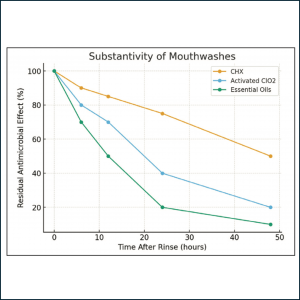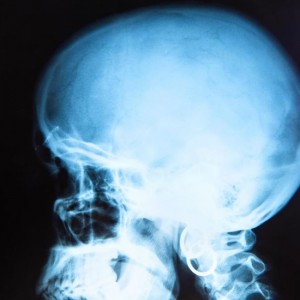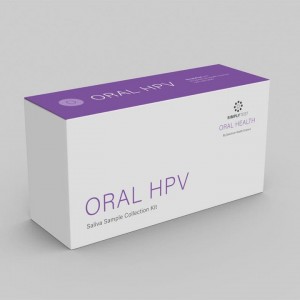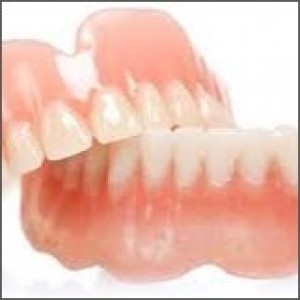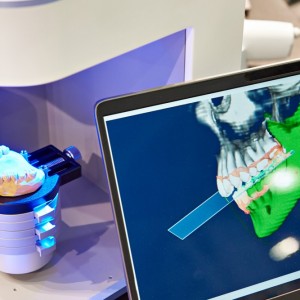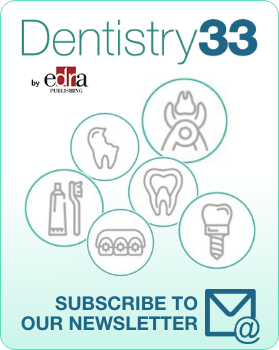
UNC, U Penn community-based study offers dental disease insights
By UNC Adams School of Dentistry News
A team of investigators at the UNC Adams School of Dentistry and University of Pennsylvania published results from a community-based pediatric oral health study that found children's microbiomes in the dental biofilm play major and previously unrecognized roles in dental disease.
Their findings, reported in the journal Nature Communications, showed that dental caries in childhood are characterized by an imbalance in the oral microbiome, and that certain previously unrecognized bacterial community members interact in complex ways, in space and time.
The research was highlighted in a UNC news story.
The researchers, led by UNC Adams School of Dentistry's Dr. Kimon Divaris, DDS and the James Bawden Distinguished Professor, spent eight years studying the complex social, behavioral and biological determinants in children's oral health.
As part of this large NIH-funded effort (the ZOE 2.0 study), the investigators collected detailed clinical and biological information from 6,500 preschool aged children enrolled in public preschools, including Head Start programs, in North Carolina. The researchers collected saliva to study the children's genomes, home water samples to measure fluoride concentration and dental plaque samples to assess the oral microbiome, all working toward a thorough study of oral health.
"The paper reports the results of a very comprehensive study to try to understand microbial players in dental health and disease," said Divaris, the study's primary investigator. "We used data from a pilot sample of only 5% of our study participants, but the investigation was done in the most complete way it can be done. We began from a state-wide community-based study, collected detailed clinical data, social, behavioral, and biological information and carried out state-of-the-art informatics and microbiome analyses.
The Adams School of Dentistry's team of investigators, including Di Wu, Dr. Apoena De Aguiar Ribeiro, DDS, and Hunyong Cho, performed clinical, bioinformatics and laboratory studies using dental plaque samples from more than 400 child study participants.
The team carried out whole genome sequencing and RNA sequencing analyses in partnership with UNC Microbiome Core Facility's Andrea Azcarate-Peril and Jeff Roach, then used custom databases and state-of-the-art informatics methods supported by Wu's NIH-funded biostatistics and bioinformatics program to discover new caries-associated species.
Wu said in the university news story that the team evaluated 11 statistical models and the computational pipeline developed ensures the strong candidate species, including Selenomonas sputigena.
"Computational pathway analysis and correlation between species and genes provides further understanding of disease mechanisms and supports the wet lab experiment results,” he said.
Subsequently, the team sought to replicate those findings using a second sample of children to see if the initial findings held true in an independent group of similarly aged children.
“We were able to show that the abundance of at least 16 different species was associated with dental caries, and it’s not only their presence that’s important; it’s what they do and how they work together,” Divaris said.
In collaboration with a University of Pennsylvania team led by co-senior author Dr. Hyun Koo, DDS, further studies were designed to pinpoint the pathogenic role of these microorganisms. Koo and Zhi Ren, a postdoctoral fellow at Penn, developed a comprehensive series of biofilm studies involving computational imaging and animal experiments to validate the observational, clinical and bioinformatics findings.
Using a novel, comprehensive multi-modal discovery-validation pipeline, the investigators then teased out how these oral bacteria might actually cause cavities. They identified an unexpected bacterial interaction and discovered a new contributor to tooth decay, Selenomonas sputigena.
“It became clear that unless you employ additional virulence assessments as well as computational imaging and biogeography studies, it’s impossible to see how these species work together,” Divaris said. The combination of different methods, techniques, and expertise in this multidisciplinary team of investigators was arguably key to this discovery, he added.
“It’s not only the presence of the bacteria that’s important, but also what they do and how they work together,” Divaris said. “This unbiased, community-based study led to the discovery that species have the potential to cause dental disease in certain contexts, not only because of their ability to produce acid and demineralize enamel, but because of their interaction in space with other species”.
The investigators suggested that Selenomonas sputigena acts as a pathobiont in dental caries, with the implication that disrupting the relationship between these two species may offer a new strategy for preventing dental disease.
As the study expands into its next phase, Divaris said they hope to analyze already-collected plaque samples from the entire group of more than 6,500 study participants enrolled in the ZOE 2.0 study and follow up with them with a new clinical examination, the future ZOE 3.0 study, monitoring for incidence of disease and identifying additional oral health and disease biomarkers.
The study’s results were published May 22, 2023, and were highlighted in a recent NIH Research Matters story.
Cho, H., Ren, Z., Divaris, K. et al. "Selenomonas sputigena acts as a pathobiont mediating spatial structure and biofilm virulence in early childhood caries." Nat Commun 14, 2919 (2023). https://doi.org/10.1038/s41467-023-38346-3.
 Related articles
Related articles
News 04 November 2025
Do Mouthwashes Disrupt the Oral Microbiome? A Balanced Perspective
A growing debate questions whether antimicrobial mouthwashes disrupt the oral microbiome—the community of bacteria, fungi, and other microorganisms essential for health.
Periodontology 25 June 2023
New research links periodontitis treatment with improved cancer outcomes
By Harvard School of Dental Medicine News
Researchers break down the pathophysiology of periodontitis and its comorbidities to highlight how the oral microbiome can affect immune responses that overlap with immune-related adverse events...
Orthodontics 03 May 2023
Impact of clear aligners on oral health, oral microbiome during orthodontic treatment
The present work highlighted further links between clear aligners and changes in oral health and the oral microbiome and provided plaque control methods for clear aligner trays.
The bacteria that cause oral infections can also contribute to patients developing life-threatening brain abscesses.
Engineers at the University of Cincinnati have developed a new device that can warn consumers about early risks of tooth decay from diseases such as gingivitis and periodontitis.
 Read more
Read more
Much like EMTs rushing to the scene after an accident, stem cells hurry to the site of a skull fracture to start mending the damage. A new finding has uncovered the signaling mechanism that triggers...
Products 05 November 2025
SimplyTest has launched a groundbreaking saliva-based test to detect high-risk strains of oral human papillomavirus (HPV), a major cause of oropharyngeal cancers.
News 05 November 2025
Perimetrics, Inc., a dental technology company pioneering quantitative diagnostics, announced today that the U.S. Food and Drug Administration (FDA) has granted clearance for the InnerView...
News 05 November 2025
On October 15, open enrollment for Medicare began nationwide. Hundreds of thousands of seniors in New Jersey will once again face the challenge of finding the right Medicare coverage, including the...
Digital Dentistry 04 November 2025
Digitalisation is an expanding field in dentistry and implementation of digital teaching methods in dental education is an essential part of modern education.



